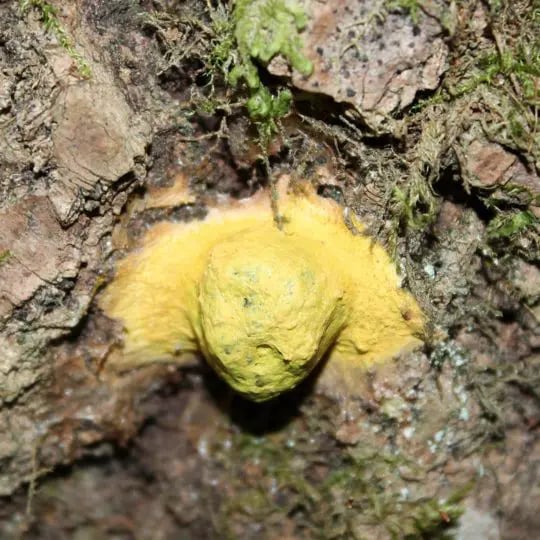Lawn Disease Library
Slime Mold

Scientific Name: Mucilago spp.
Primary Grass Affected: All grass types
Brief Description: Light layer of blue-gray, yellow, or black dust coating the grass blades in irregular patches.
What is Slime Mold?
Slime Mold is caused by the fungus Mucilago spp., and grows best in hot, humid conditions, usually requiring temperatures or 75 degrees F or higher. Being non-parasitic, it is one of the less harmful lawn diseases and should do no long-term damage to your lawn. Though the fungal spores that give the disease color can block some light from the grass blades, it is uncommon for the grass to turn yellow beneath it.
Most forms of Slime Mold can be eradicated simply by raking the grass. If left to its own devices, Slime Mold will vanish on its own within weeks. Because there are different types of slime molds, they may infect your lawn from spring through summer, though they are more common in late summer when the weather is warmer.
Signs and Symptoms of Slime Mold
This fungal disease is bright and showy, standing out in a green lawn with its unhealthy looking colors (blue-gray, yellow, black). Contrary to its appearance, Slime Mold will do little if any long term damage. After a few weeks the color naturally recedes, leaving your lawn as it was, though some slight yellowing due to the spores blocking sunlight from the grass blades is possible.
The less common varieties of Slime Mold will not appear on your turfgrass but instead on any wood-based materials that you may have on your lawn. These Slime Molds, fairly common in and near forested areas, are transported via the wind and have an even more striking appearance, often compared to “scrambled eggs” and “dog vomit.”
How to Prevent Slime Mold
In order to prevent Slime Mold, it is a good idea to reduce humidity on your lawn in the summer as much as possible by watering early in the day before the sun can heat the moisture left on the grass blades. Core aeration can also help to reduce humidity and limit the spread of Slime Mold during the cooler months when the disease spreads. Additionally, avoid applying nitrogen to aid the growth of your lawn while Slime Mold is active. Fungicides are rarely necessary after an infection, though they could be used to prevent an infection.
Need Help with Slime Mold?
Call today at and let's talk about how we can help you with Slime Mold and other Lawn Disease Library.